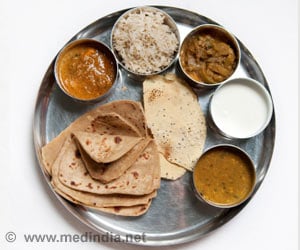India's fertility decline signifies global demographic shifts with profound socio-economic and environmental impacts.

Global Implications and Challenges
According to recent research published in The Lancet journal, Indias fertility rate has plummeted from a staggering 6.2 in 1950 to under 2 in 2021. Projections suggest a further decline to 1.29 by 2050 and a strikingly low 1.04 by 2100. This pattern in decline mirrors global trends also where the Total Fertility Rate (TFR) has also experienced a significant downturn, falling from over 4.8 children per woman in 1950 to 2.2 in 2021, with expectations to reach 1.8 by 2050 and 1.6 by 2100 globally (1✔ ✔Trusted SourceIndia’s fertility declines, but it still leads world in population growth
Go to source). These statistics not only shed light on India’s demographic evolution but also highlights the underscore broader global patterns. However, beneath the surface of these statistics lies a complex narrative of socio-economic and environmental implications.
‘Did you Know? By 2100, India's fertility rate is projected to plummet to 1.04, marking a stark contrast from 6.2 in 1950. #fertility #india #medindia’





The Lancet journal highlighted that in 2021, there were more than 1.6 crore live births in India, a figure that escalated to over 2.2 crore by 2021. Nonetheless, projections paint a different picture, anticipating a decline to 1.3 crore by 2050. This decline, while indicative of a shifting demographic paradigm, raises pertinent questions about the economic, social, and environmental ramifications.Strategies for Sustainable Demographic Transition
Researchers from the Global Burden of Disease (GBD) 2021 Fertility and Forecasting Collaborators have cautioned about a demographically divided world in the 21st century, primarily driven by high fertility rates in low-income countries, particularly in western and eastern sub-Saharan Africa. The forecast suggests that the share of global live births in low-income countries could nearly double by 2100, potentially exacerbating challenges posed by climate change.Indeed, climatic changes could compound existing vulnerabilities in high-fertility, low-income regions, leading to heightened risks of floods, droughts, and extreme heat. Such environmental stressors could undermine food, water, and resource security, exacerbating health risks and mortality rates.
Moreover, as the global population ages, the implications of trend in fertility extend beyond demographics. Recent research underscores their potential impacts of economies, geopolitics, food security, health, and the environment. There exists a clear demographic divide, with middle-to-high-income regions experiencing distinct effects compared to low-income regions.
Addressing these challenges necessitates innovative solutions and investments in education and healthcare infrastructure. Improving women’s access to education and awareness of contraceptive emerges as pivotal strategies in curbing fertility rates, with promising outcomes witnessed in regions where such initiatives have been prioritized.
Despite the decline in global fertility rates, sub-Saharan Africa stands at the forefront of considerable decline in fertility, driven by expanding educational opportunities and access to contraceptives. These developments emphasize the role of proactive policy interventions in shaping demographic trajectories.
Advertisement
"India’s fertility decline embodies a global demographic narrative, calling for proactive policies and international cooperation to navigate this transformative journey."
Advertisement
- India’s fertility declines, but it still leads world in population growth - (https://pubmed.ncbi.nlm.nih.gov/12319784/)
Source-Medindia













